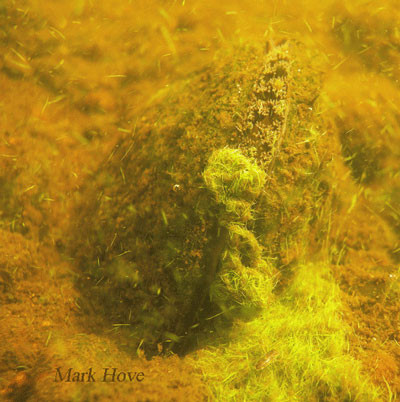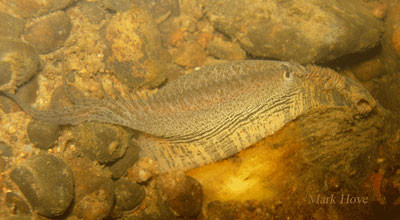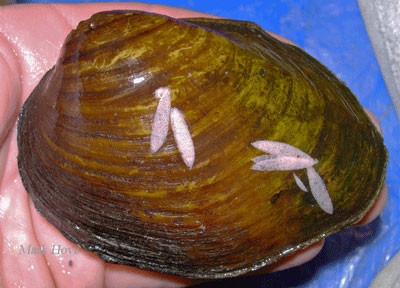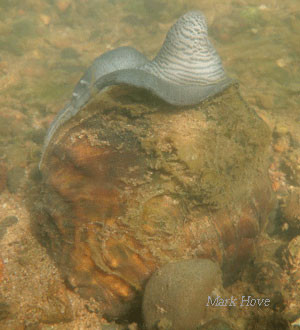| The Minnesota Native Mussel Project highlights activities of several organizations working to manage mussel communities and conserve rare species. The United States holds the greatest diversity of freshwater mussels on the planet; a significant portion of which live in upper midwest rivers and streams. The life history of freshwater mussels is fascinating (see Unio Gallery below) and these filter-feeders clarify the water throughout their long lives. Habitat degradation and loss has resulted in these animals becoming the most threatened animal or plant group in the US. Several local, regional and national organizations are working to improve the quality of our mussel communities through activities linked below: |
Mussels capture nutrients from the water that might otherwise have been carried downstream. As they filter water they biodeposit a variety of materials, making them available to aquatic insects and other animals, which are food for fishes. (Note aquatic insect on deposited material) |
The Minnesota Native Mussel Project highlights activities of several organizations working to manage mussel communities and conserve rare species. The United States holds the greatest diversity of freshwater mussels on the planet; a significant portion of which live in upper midwest rivers and streams. The life history of freshwater mussels is fascinating (see Unio Gallery below) and these filter-feeders clarify the water throughout their long lives. Habitat degradation and loss has resulted in these animals becoming the most threatened animal or plant group in the US. Several local, regional and national organizations are working to improve the quality of our mussel communities through activities linked below:
Minnesota
- Dept. Fisheries, Wildlife and Conservation Biology – Mark Hove
- Bell Museum of Natural History, Invertebrate Collection – Minnesota’s voucher repository for freshwater mussels
- Depts. of Environmental Studies and Biology – Dan Hornbach
Minnesota Department of Natural Resources
National Park Service – Minnesota national parks with their diverse mussel communities include – St. Croix National Scenic Riverway and Mississippi National River and Recreation Area
Regional
U.S. Fish and Wildlife Service
National
Freshwater Mollusk Conservation Society and American Malacological Society, Inc. are professional societies dedicated to the study and conservation of mollusks
Unio Gallery – pictures, video and descriptions of fascinating mussel behaviors
Musselp – global revision of Unionoida
Please contact Mark Hove ([email protected]) or people identified in the links above for more information.
Mussel Life Cycle
The life cycle of many freshwater mussels involves their young briefly attaching to a fish. Normally only a small number of mussel larvae attach to the fish and are a temporary, negligible issue. Fishes benefit from the mussels clarifying the water and biodepositing nutrients that provide food for insects, an important food source for many fishes.
Several amazing behaviors have evolved in mussels that increase the likelihood their young will encounter a fish. For example, some species wave a portion of their mantle that is shaped, colored and wiggles like a minnow or darter, other fishes (A) or crayfish, others package their larvae in fish food-like packets (B), while others broadcast larvae to form nets, and still other species hold their young in a magazine that erupts when a fish bites down on it (C); even more behaviors have been observed in other species.
| (A) The Pocketbook mussel tries to attract bass, sauger, and walleye by waving her colored mantle. Note that mussels are nearly blind and have never seen the lures they display. | (B) Immature young of the Minnesota-listed Sheepnose mussel are packaged by the hundreds in leaf-shaped packets that range in color from white to orange to pink to red. | (C) The federally endangered Winged Mapleleaf mussel, which still live in the St. Croix River, holds their young in a grey, pyramid-shaped mantle pouch. |



